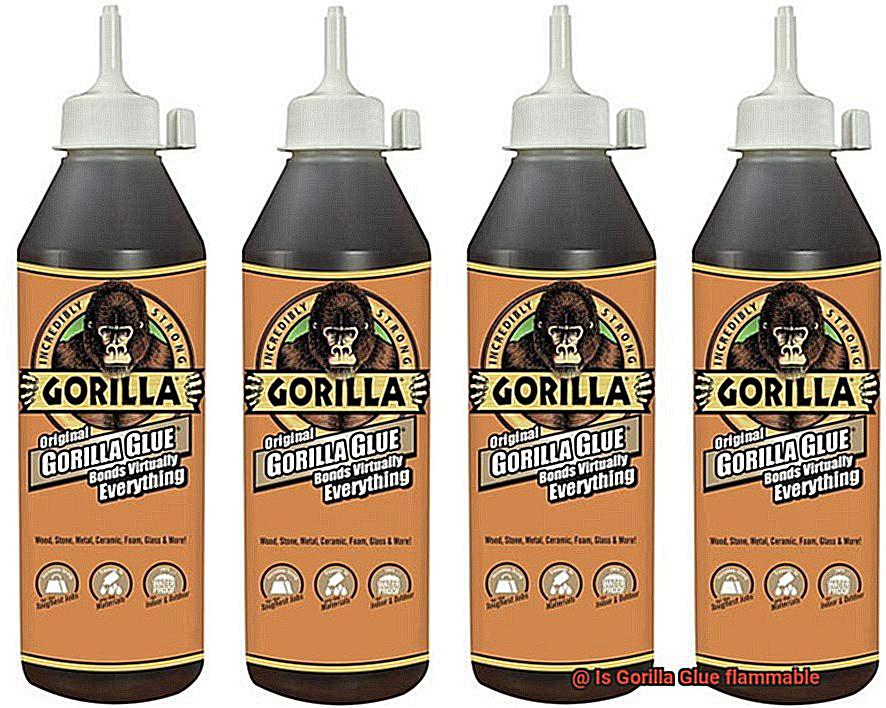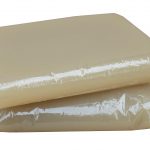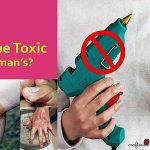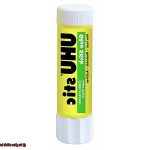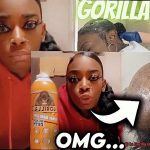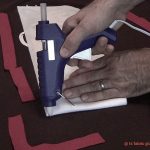Today, we’re diving into the burning question that’s been on everyone’s mind: Is Gorilla Glue flammable? Whether you’re a woodworking wizard, a repair maestro, or just a glue aficionado, it’s crucial to understand the ins and outs of this adhesive powerhouse before you get your hands sticky.
Gorilla Glue has become a go-to for many thanks to its unbeatable bonding strength and versatility. But let’s not forget about safety. In this blog post, we’ll uncover the truth about whether Gorilla Glue is flammable, shed light on potential risks, and arm you with some handy tips to handle it like a pro. So buckle up and get ready for an enlightening journey through the fiery world of Gorilla Glue.
Is Gorilla Glue Flammable?
Contents
- 1 Is Gorilla Glue Flammable?
- 2 Understanding the Components of Gorilla Glue
- 3 The Dangers of Igniting Cyanoacrylate
- 4 How to Safely Use Gorilla Glue in High-Risk Applications
- 5 Different Types of Gorilla Glue and their Flammability Properties
- 6 The Exothermic Reaction Generated by Curing Gorilla Glue
- 7 Proper Storage and Handling Instructions for Gorilla Glue
- 8 Conclusion
When it comes to adhesive products, safety is of paramount importance. Many individuals are curious about whether Gorilla Glue, a popular and highly effective adhesive, is flammable. While Gorilla Glue itself is not inherently flammable, it contains certain components that can pose a fire hazard if not handled with care. In this article, we will delve into the composition of Gorilla Glue and explore why it can still be a potential fire risk.
The Composition of Gorilla Glue:
Gorilla Glue is a polyurethane adhesive that utilizes a moisture-activated formula to create an incredibly strong bond. It contains isocyanates, which are highly reactive chemicals commonly found in polyurethane products. Isocyanates have the potential to release heat when they come into contact with substances like water or alcohols. This exothermic reaction can significantly increase the risk of fire.
Solvents and Flammability:

Another crucial component of Gorilla Glue is its solvents, specifically acetone and ethanol. These solvents aid in dissolving and dispersing the polyurethane components, making the adhesive easier to apply. However, acetone and ethanol are highly flammable substances on their own. If exposed to open flames or high heat sources, these solvents can ignite easily and start a fire.
Preventing Fire Incidents:
To ensure safe usage of Gorilla Glue, it is essential to follow some key precautions:
- Read the Instructions: Carefully read and abide by the manufacturer’s instructions for storing, handling, and using Gorilla Glue.
- Avoid Ignition Sources: Keep Gorilla Glue away from open flames, sparks, or any other potential ignition sources during application and curing.
- Ventilation: Allow the adhesive to cure in a well-ventilated area to prevent the accumulation of potentially flammable vapors.
- Proper Storage: Store Gorilla Glue in a cool, dry place away from heat and direct sunlight. Ensure the container is tightly sealed to prevent evaporation of the solvents.
Understanding the Components of Gorilla Glue
Attention all adhesive enthusiasts. components that form this beloved adhesive and explore its flammability. Safety first, my friends. Strap on your safety goggles and let’s plunge into the depths of Gorilla Glue.
The Science Behind Gorilla Glue:
At the core of Gorilla Glue lies a secret ingredient: polyurethane, a polymer as versatile as it is powerful. Comprised of organic units connected by urethane links, polyurethane wields outstanding adhesive properties and formidable durability. It forges unyielding bonds capable of withstanding the test of time (and those moments when you can’t resist yanking on things).
Foaming Agent: The Expanding Powerhouse:
Ever wondered how Gorilla Glue defies gravity, expanding to fill even the tiniest crevices? Enter the foaming agent, an ingenious addition that causes the adhesive to foam upon application. This creates an even stronger bond, especially on porous surfaces. Say farewell to loose connections and welcome rock-solid adhesion.
Water: The Catalyst for Curing:
Though counterintuitive, water plays a pivotal role in Gorilla Glue’s curing process. Acting as a catalyst, it triggers the hardening and solidification of polyurethane. As water evaporates, it enables the glue to morph into an unbreakable bond. But bear in mind, water can influence the flammability of certain substances – more on that soon.
Additives: Enhancing Performance:
Gorilla Glue also boasts additives like solvents and stabilizers. These clandestine companions enhance the adhesive’s flowability and workability while elevating its overall performance. They ensure that Gorilla Glue remains the epitome of reliability for all your sticking needs.
Flammability Factors:
Now for the burning question: Is Gorilla Glue flammable? In short, no. Once fully cured and hardened, Gorilla Glue develops an astonishing resistance to heat and flame. Rest assured, your glued creations won’t go up in smoke.
Curing Process: Handle with Care:
During the curing process, however, Gorilla Glue releases carbon dioxide gas. Under specific circumstances, this gas can prove flammable. To avoid any fiery mishaps, it’s crucial to use Gorilla Glue in well-ventilated areas and keep it far from open flames or sparks until fully cured. Caution tape out and safety goggles on.
Safety First: Follow Instructions:

As with any adhesive, including our beloved Gorilla Glue, adhering to the manufacturer’s instructions is paramount. These guidelines provide insights into proper application techniques and safety measures, minimizing potential risks and hazards. Remember, better safe than sorry.
The Dangers of Igniting Cyanoacrylate
While this versatile adhesive can work miracles in bonding materials, it’s crucial to understand the potential risks when exposed to certain conditions. Buckle up and prepare for a journey into the fiery truth behind igniting cyanoacrylate.
The Heat is On:
Cyanoacrylate, the main component of Gorilla Glue, may not be inherently flammable. However, it becomes a volatile threat when faced with an open flame or high temperatures. Its ignition temperature can range from 250 to 300 degrees Celsius (482 to 572 degrees Fahrenheit), depending on the formulation and brand. So, keep your adhesives far from fire-breathing dragons.
Ignition Consequences:
Once ignited, cyanoacrylate unleashes a rapid and intense flame, potentially causing severe burns and even sparking fires if mishandled. But that’s not all. Ignited cyanoacrylate also releases toxic fumes that nobody wants to breathe in.
Fighting the Flames:
Taming the blaze of an ignited cyanoacrylate can be trickier than expected. Traditional methods like water or foam may prove ineffective in extinguishing such flames. Specialized fire suppression techniques might be necessary to conquer this beastly inferno. Remember, safety always comes first.
Handling with Caution:
To prevent accidental ignition, it is crucial to handle cyanoacrylate adhesives with utmost caution and keep them away from heat sources or open flames. Store them in cool and dry places, far from potential fire-starters. Let’s confine those flames where they belong – on movie screens or BBQ grills.
In Case of Emergency:
Accidents happen, and preparedness is key. If cyanoacrylate ignites, evacuate the area immediately and call emergency services. Employ appropriate fire extinguishing methods, as this adhesive can be stubborn to put out. Remember, it’s always better to err on the side of caution.
How to Safely Use Gorilla Glue in High-Risk Applications
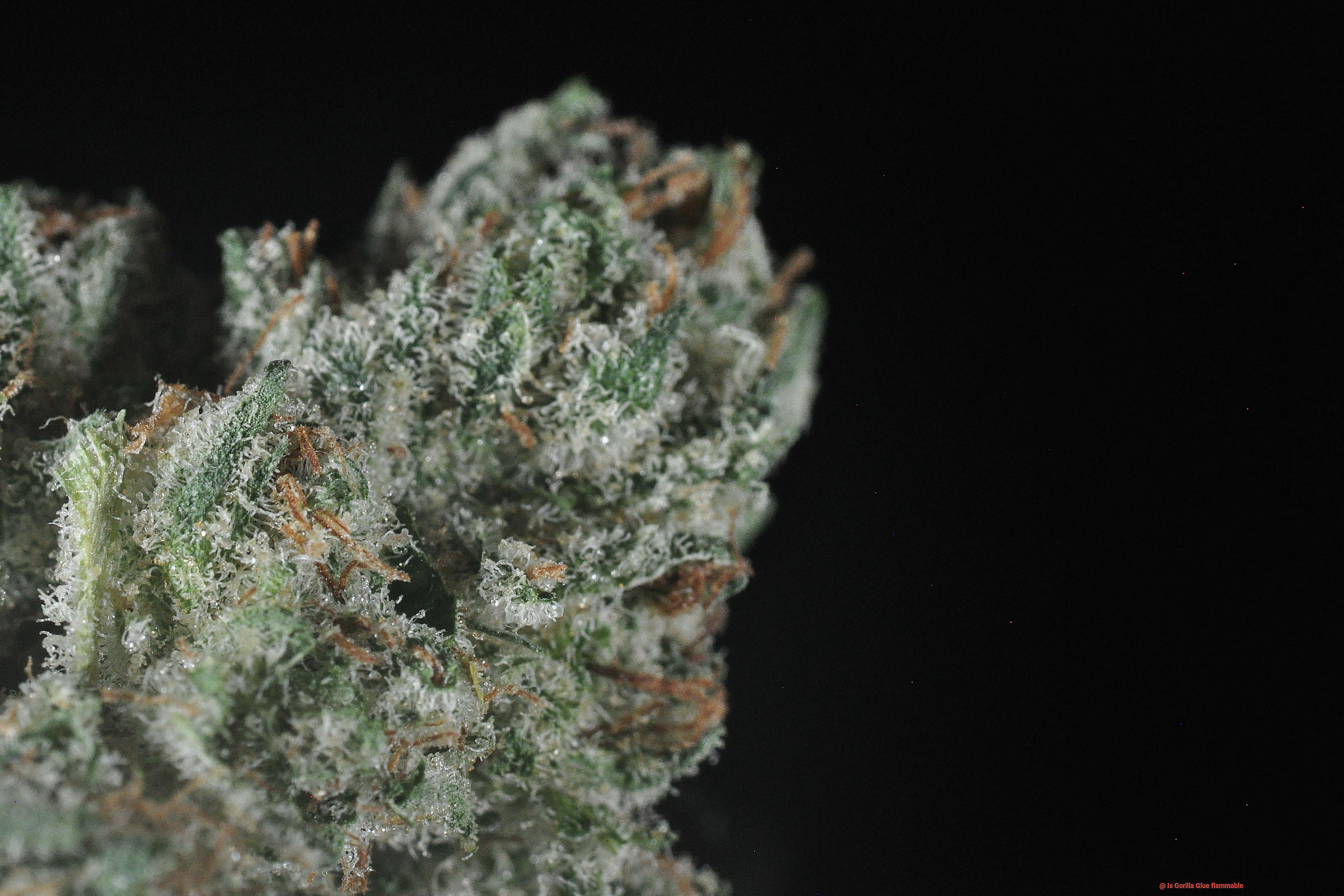
Gorilla Glue is a versatile and powerful adhesive that is widely used in various applications, including high-risk ones. However, when working with Gorilla Glue in these situations, it is crucial to understand its flammability properties and take necessary precautions to ensure safety. Here are some guidelines to safely use Gorilla Glue in high-risk applications:
Ensure Proper Ventilation
Proper ventilation is essential to minimize the concentration of flammable vapors in the working area. Opening windows or using fans can help disperse the fumes and reduce the risk of accidental ignition. Adequate airflow is key to maintaining a safe environment.
Keep Ignition Sources Away
It is important to keep all sources of ignition, such as open flames, sparks, and hot surfaces, away from the glue and the working area. Although cured Gorilla Glue is not flammable, it can release flammable vapors during the curing process. By keeping ignition sources at a safe distance, you can significantly reduce the risk of accidental fires or explosions.
Use in Moderation
When using Gorilla Glue in high-risk applications, it is advisable to use it in small quantities and avoid excessive application. This helps reduce the amount of vapor released into the air, minimizing the risk of flammability. By using the glue sparingly, you can maintain control over the application process and minimize potential hazards.
No Smoking or Open Flames
Smoking or using any other open flames near the glue or the working area should be strictly avoided. This simple precaution can greatly reduce the risk of accidental fires or explosions. By eliminating potential sources of ignition, you can create a safer working environment for yourself and others.
Proper Storage
After use, it is important to store Gorilla Glue in a cool and dry place away from direct sunlight and heat sources. Exposure to high temperatures can lead to accidental ignition. By storing the glue properly, you can prevent any potential accidents and ensure its effectiveness for future high-risk applications.
Remember to read and follow the manufacturer’s instructions and safety guidelines provided with the product. If you have any concerns or doubts about using Gorilla Glue in specific high-risk applications, it is advisable to consult with professionals or experts who have experience in using the adhesive for similar purposes.
Different Types of Gorilla Glue and their Flammability Properties
Gorilla Glue is a popular choice for adhesive needs due to its strength and versatility. However, it is crucial to understand the flammability properties of different types of Gorilla Glue before using them. In this article, we will delve into the world of Gorilla Glue and explore the flammability properties of its various types.
The Original Gorilla Glue:
The Original Gorilla Glue is a go-to adhesive for multiple materials such as wood, metal, stone, and ceramics. It is waterproof and forms a strong bond. The good news is that once it has cured, it is not flammable. This means you can confidently use it around heat or flames without worrying about any potential fire hazards.
Gorilla Super Glue:
Gorilla Super Glue is renowned for its fast-drying and secure bonding capabilities. Like the Original Gorilla Glue, once it has fully cured, it is not flammable either. However, it is important to remember to keep it away from open flames or heat sources while it is still drying.
Gorilla Wood Glue:
Designed specifically for woodworking projects, Gorilla Wood Glue provides a strong hold for wood surfaces. Similar to the Original Gorilla Glue, it is not considered highly flammable once it has dried and cured. This makes it safe to use in woodworking workshops without worrying about ignition risks.
Gorilla Epoxy:
Gorilla Epoxy is a two-part adhesive that offers high strength and durability. While it is not highly flammable when used properly, it is essential to follow the instructions and avoid exposing the epoxy mixture to high temperatures or open flames during the curing process. This precaution ensures that there are no unexpected fire hazards during the bonding process.
Safety Precautions:
While cured forms of Gorilla Glue are generally not flammable, it is crucial to handle any adhesive with care. Always work in a well-ventilated area and keep away from open flames or sparks until the glue has fully dried and cured. Following the manufacturer’s safety instructions is key to using Gorilla Glue safely.
The Exothermic Reaction Generated by Curing Gorilla Glue
Today, we embark on a thrilling journey to unravel the mysteries behind Gorilla Glue’s exceptional adhesive power. Brace yourselves as we delve into the captivating world of the exothermic reaction that fuels this glue’s curing process. Prepare to be amazed by the fiery truth behind this remarkable adhesive.
The Exothermic Reaction:
When Gorilla Glue encounters moisture in the air or on the surfaces it bonds, a mesmerizing chemical dance ensues. This captivating performance is known as polymerization, where individual molecules twirl together to form majestic chains called polymers. At the heart of this reaction lies a potent polyurethane resin within the glue that initiates this captivating sequence upon contact with moisture.
Heat Release:
Now, here comes the truly fascinating part – as polymerization unfolds, a sizzling byproduct is unleashed into the world – heat. This exothermic reaction produces a considerable amount of heat, particularly when larger quantities of glue are applied or when it is used in thick layers. In fact, the temperature of the glue can skyrocket at an alarming rate and may even cause burns upon contact.
Safety Measures:
While it’s important to acknowledge that Gorilla Glue’s curing process generates heat, rest assured that the glue itself is non-flammable. It doesn’t easily ignite nor contribute to fire hazards. However, as with any adhesive, it’s prudent to exercise caution. Keep Gorilla Glue away from open flames or potential ignition sources to ensure safe usage.
Importance of the Exothermic Reaction:
Now let’s explore why this exothermic reaction holds such immense significance in creating an unyielding bond. The heat generated during the curing process accelerates the glue’s hardening time, allowing it to swiftly and strongly fuse surfaces together. This guarantees a resilient and enduring bond, making Gorilla Glue the ultimate choice for a multitude of projects.
Proper Storage and Handling Instructions for Gorilla Glue
Proper storage and handling of Gorilla Glue is crucial to ensure safety and maintain its effectiveness. To become a glue guru, follow these guidelines:
- Storage: Keep Gorilla Glue in a cool, dry place. Extreme temperatures can affect its performance and shelf life. Store at room temperature, away from direct sunlight and heat sources.
- Sealing: After each use, tightly seal the container to prevent evaporation or drying out. Proper sealing maintains the glue’s adhesive properties. Whether it’s a bottle or tube, keep it closed when not in use.
- Handling: Protect your hands by wearing gloves. While the glue is not harmful, prolonged exposure can cause skin irritation or allergic reactions. Nitrile or latex gloves are recommended for safe handling.
- Eye Protection: Wear safety goggles or glasses with side shields to shield your eyes from accidental splashes or contact with the glue. Prevention is key to avoiding irritation and discomfort.
- Application: Less is more. Gorilla Glue expands as it cures, so use it sparingly. Apply a thin layer evenly onto one surface and join the pieces together immediately. Avoid overflow or seepage onto unwanted surfaces.
- Cleanup: Remove excess glue before it dries. Use a damp cloth or acetone-based nail polish remover for easier cleanup. Test any cleaning agent on a small inconspicuous area first to ensure it won’t damage the surface.
- Safety First: Keep Gorilla Glue out of reach of children and pets. While non-toxic once cured, ingestion can cause gastrointestinal distress. Store securely to prevent accidents.
kg7Z8m5rSjY” >
Conclusion
In conclusion, while Gorilla Glue may not be inherently flammable, it does contain components that can present a fire hazard if mishandled. This powerful polyurethane adhesive relies on a moisture-activated formula to create an unyielding bond. However, caution must be exercised as the glue contains isocyanates, which have the potential to release heat when they come into contact with certain substances like water or alcohols. Moreover, the inclusion of solvents such as acetone and ethanol in Gorilla Glue make it highly flammable in its own right.
To ensure the safe use of Gorilla Glue, it is crucial to adhere to several key precautions. One must meticulously read and follow the manufacturer’s instructions, avoiding any potential ignition sources during both application and curing processes. Adequate ventilation in the curing area is essential, as is storing the glue in a cool, dry place away from direct sunlight and sources of heat.
It is important to note that different variants of Gorilla Glue possess varying degrees of flammability. The Original Gorilla Glue, Gorilla Super Glue, and Gorilla Wood Glue are generally considered less prone to catching fire once fully cured. However, even with these types, exercising caution throughout the curing process remains imperative. On the other hand, special attention should be given when using Gorilla Epoxy—a two-part adhesive that may exhibit increased sensitivity to high temperatures or open flames.
By gaining an understanding of Gorilla Glue’s composition and adhering strictly to safety guidelines, you can confidently incorporate this adhesive into your DIY projects while minimizing any potential fire hazards.

